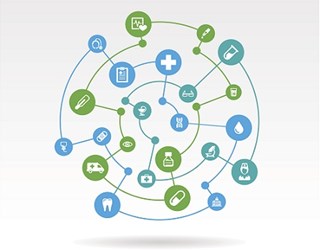The Internet Of Things And Its Quest To Cut Healthcare Costs
By Megan Williams, contributing writer

The technology you deliver to your clients has a lot riding on it — it’s expected to save patient lives, make clinician and administrative jobs easier, measure up to government regulations, and do all that while saving money. The latest claim lands squarely on the shoulder of the Internet Of Things (IoT), and the expectation that this new web of wearables, apps, sensors, and implanted devices will be able to cut healthcare costs by 25 percent.
Strategy Analytics announced the release of their report in a recent press release, explaining the role Big Data Analytics will likely play in leveraging the IoT across industries to bring benefits around revenue, cost cutting, and competition. The report highlights the IoT’s ability to enable organizations to “sift through the data deluge and make informed, actionable responses to solve real world business issues that help organizations to conserve resources, manpower, and money as well as driving new services”— all challenges that align cleanly with the current needs of the healthcare industry.
Your Clients
Forward-thinking providers and facilities will understand the benefits that connected healthcare environments via the IoT offer, but providers at all levels of technological advancement will be able to benefit. Those providers who are less advanced may be more difficult to sway on IoT solutions, but a focus on cost reduction might be the most effective angle to take.
According to Laura DiDio, Strategy Analytics’ director of enterprise research and consulting, “Applications like office security/video surveillance, smart building controls and financial and healthcare analytics can help businesses cut costs by 25 to 35 percent depending on individual use cases and help organizations to derive greater business value from their data assets.”
The report directly emphasizes the fact that multiple types of organizations may be able to solve basic operational and infrastructure problems including controlling costs around heating and cooling and keep track of patients, staff, medications, and materials. Andrew Brown, Strategy Analytics’ executive director, enterprise and IoT research offered his opinion, “IoT provides businesses with real-time access to their assets via intelligent sensors and gateways. Analytics applied to the Big Data derived from these assets will solve real business challenges and will enable corporations to deliver value added services to their customers, something that is supported by our end-user research.”
The report estimates they could save up to 25 percent through IoT initiatives, and there is likely even greater opportunity for savings in healthcare. According to Jean-Claude Saghbini, vice president and general manager for Cardinal Health Inventory Management Solutions, “In a rapidly growing network of smart devices communicating with each other, IoT has gained significant traction in health care, and while much of healthcare’s IoT focus has centered on patient monitoring applications, we believe the medical devices and implantables are ripe for an IoT approach. Building on existing automated cloud-based supply chain solutions, our vision is to create a level of efficiency and connectivity that will transform the healthcare supply chain from a source of savings into a strategic asset that can significantly reduce the total cost of care.”
